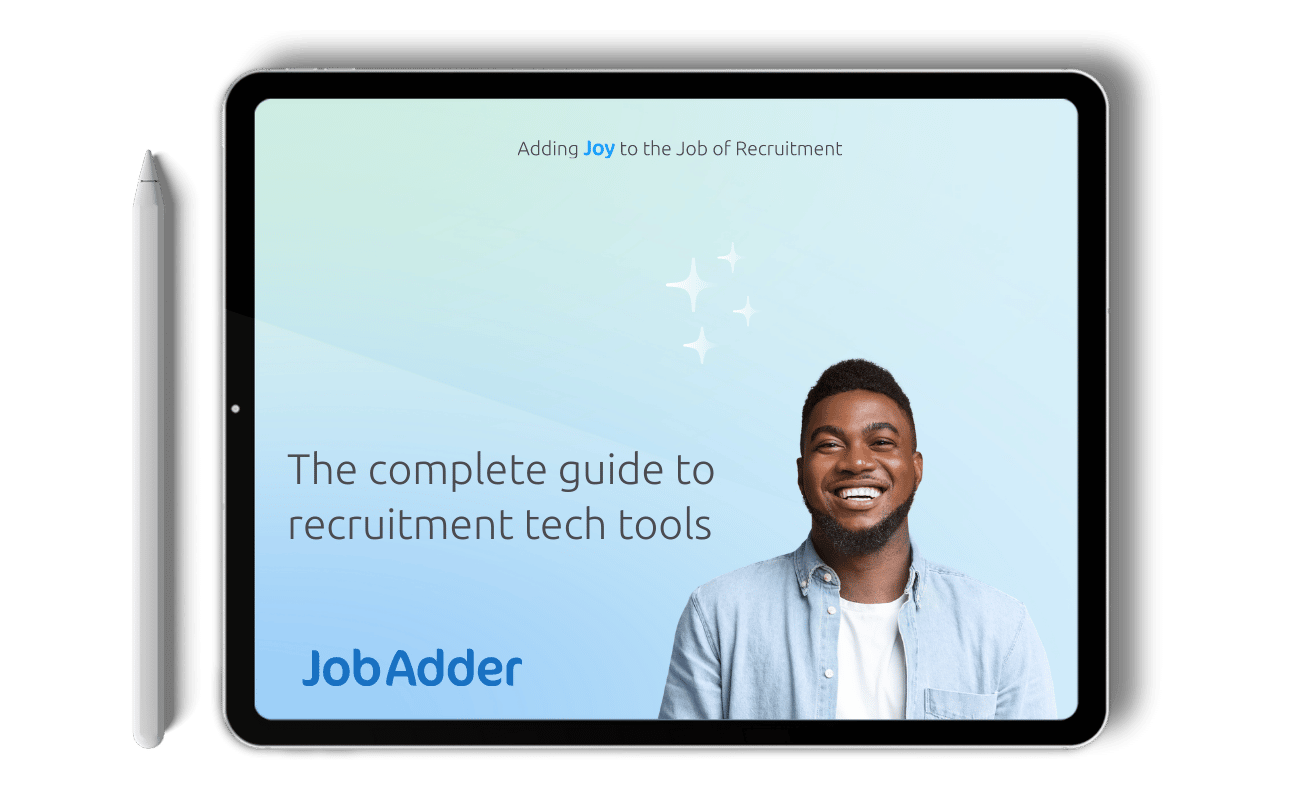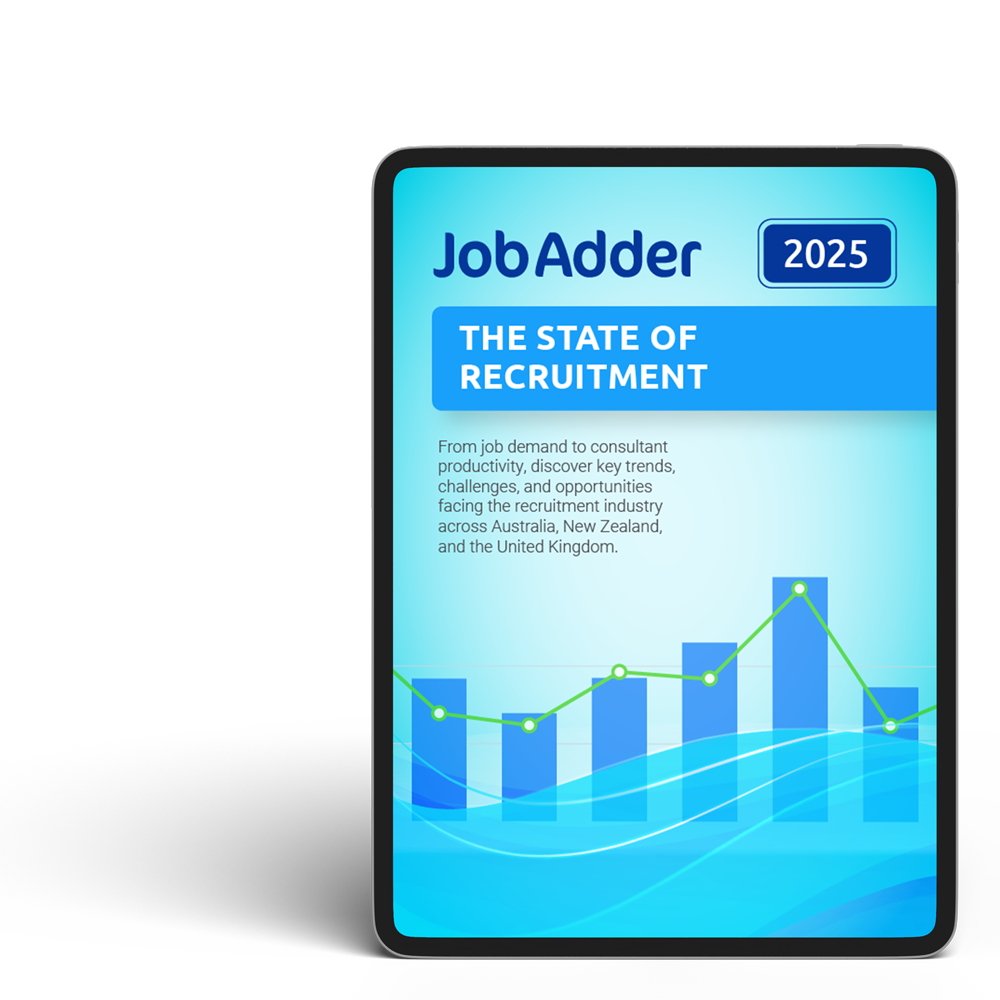Recruitment Blog
Recruiting tips: How to conduct a video interview

For years the recruitment process consisted of phone interviews, emails, and most definitely face to face job interviews. As technology has advanced, video interviews, or virtual interviews, over Skype and Zoom have become increasingly popular, changing the face and future of recruitment.
A video interview is a remote alternative to the face-to-face interview. Since 2011, video interviews have risen by 49%, and 74% of recruiters have found that video interviews have made their job easier to interview and shortlist candidates.
With the time to hire averaging to 42 days, video interviews can help recruiters establish quickly whether or not a candidate is the right fit for the company or client– but only when done right.
Use these top tips to ensure your video interviewing process gets you the right person for the job, every time.
ACCESS OUR FREE EBOOK: The complete guide to recruitment tech tools
What are video interviews?
There are two types of video interviews: live and one-way.
A live video interview is just like a regular face-to-face interview– a scheduled, two-way conversation in real time between the candidate and the hiring manager, but virtually, through a webcam.
A one-way video interview, on the other hand, is not a dialogue. A candidate records themselves answering a list of questions provided by the recruiter, and then submits their responses for evaluation (more on this later).
Recruiters: How to conduct a successful video interview
Best practices for video interviews and in-person interviews overlap quite a bit, but there are a few key things to keep in mind to ensure your video interview process still yields the best candidates.
Video interviews: Pre-interview prep
To guarantee you make a good impression, make sure you add these few things to your interview prep routine:
- Send over all relevant details to the interviewee ahead of time. What equipment will they need to join the interview? Do they need specific software?
- Understand your goals. Determine what you want to know about the candidate– are you more interested in their soft skills? Their industry knowledge? Their confidence? Understanding goals will save both you and your candidate time down the line.
- Silence your phone and all computer notifications
- Make sure your internet connection is reliable
- Go to a quiet space. Lots of background noise can really derail a video interview.
- Double check your video interview software. Whatever you use, whether it’s Zoom, Skype or Google Hangouts, make sure things like your microphone, screen sharing abilities and camera quality are all running smoothly.
- Have a backup plan. If yours or your interviewee’s laptop suddenly malfunctions, or WiFi becomes unreliable, how will you proceed? It might be a good idea to exchange phone numbers before the interview so you can continue over the phone, if necessary.
Running the video interview
Even though virtual meetings can inherently feel more casual, you still want to make a great first impression on your candidate. Here are a few best practices to ensure the candidate leaves with a great first impression of your company or client.
- Prepare your interview questions in advance, and jot down your interviewee’s answers to reference later. Make sure you read up on the candidate before the interview, and tailor at least a couple of questions specifically to their strengths and experiences.
- Highlight company culture. Workplace culture is becoming more and more important, especially among younger candidates. Be sure to mention your company’s core values, office structure and work-life balance.
- Invite other team members to the call. It’s important to get a second opinion of a candidate before extending an offer. Double check your judgement by inviting some other team members to the video call.
- Dress appropriately. Even though you might not be in the office while conducting the interview, it’s still important to dress professionally.
- Be mindful of your body language, and make sure you give the candidate your full attention. Make eye contact, nod along as the candidate answers your questions, sit up straight and smile.
Post-interview follow-up
Maintaining contact with the candidate after the interview is a great way to set your company apart– a whopping 77% of job seekers claim they have been ghosted by prospective employers over the last year.
Here’s how to keep your candidate interested throughout your decision-making process:
- Send them an email after the interview. Thank them for their time, and provide a general idea of your hiring timeline– when can they expect to hear back from you?
- Be true to your word. After giving your candidates a timeline, stay true to it. Even if your decision-making process is taking longer than planned, be sure to reach out to provide an updated timeline.
Video interviews vs. in-person interviews
Video interviews and in-person interviews each offer a unique set of advantages and disadvantages.
In-person interviews
Advantages of in-person interviews
- It’s easier to make accurate judgements in-person. It’s much easier to read body language and assess communication skills in-person.
- Interruptions are far less likely. When candidates come into the office for interviews, technological difficulties, uncontrollable background noise and other disruptions are far less likely to occur during the interview, allowing both the interviewer and interviewee to completely focus.
- It’s easier to show off company culture. Candidates can get a great feel for workplace culture when they come into the office for the interview. Plus, it’s much easier to introduce candidates to team members.
Disadvantages of in-person interviews
- Much more time-consuming. In-person interviews tend to take longer to schedule, prepare for and perform on both sides, increasing the length of the hiring process as a whole.
- It’s expensive. Recruiting the best candidates means paying for the travel and hotel expenses of out-of-town interviewees. If that isn’t an option and companies can only hire local candidates, in-person interviews greatly reduce the talent pool.
Video interviews
Although video interviews help improve hiring process efficiency, there are a few downsides to a completely remote interviewing strategy.
Advantages of video interviews
- Improves hiring efficiency. Companies using video interviews see a 5-7x decrease in the time their screening process takes.
- Reduces cost to hire. With video interviews, companies can save money on travel and hotel expenses for out-of-town candidates. Plus, because video interviews save time, hiring teams and recruiters move through the hiring process more quickly, which saves money.
- Removes location barriers for hiring. Video interviews allow recruiters to increase their talent pool exponentially because geographic location is no longer a barrier.
- Improves the candidate experience. According to a 2019 candidate survey, 83% of candidates are satisfied with video interviews as a recruitment method. By building a connection with candidates and focusing on improving the candidate experience, applicants would be more likely to accept a job offer.
Disadvantages of video interviews
- It can be harder to create a meaningful connection virtually. With less visual data like body language and other non-verbal communication, it can be more difficult to get to know the candidate. Plus, disruptions like barking dogs, crying children and outside traffic can make it more difficult to focus.
- Technical difficulties. Unreliable WiFi, malfunctioning microphones, shoddy camera quality and software issues can make a video interview much less informative, and much more frustrating, than in-person interviews.
Embracing the future
As we continue to implement video technology into our recruitment strategies, it’s easy to see that video is the future and it’s here to stay.
To make your hiring process even more efficient, implement JobAdder recruiting software. JobAdder software streamlines job posting, application screening and candidate engagement, helping you attract and hire the best candidates possible.
Want to invest in tech tools that simplify your sourcing and save time? Our guide can help…

Related blog posts

AI is fast becoming a mainstay in the way we work. Savvy recruiters already understand this and are finding ways …
Ready to get started?
Talk to one of our friendly team members


